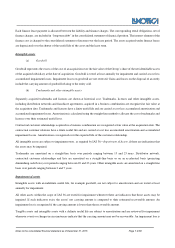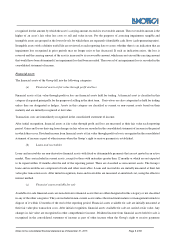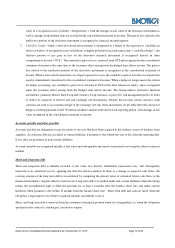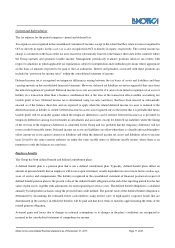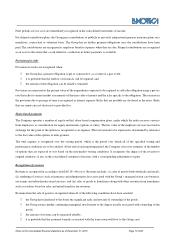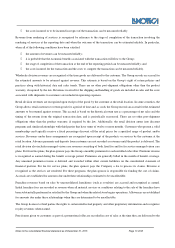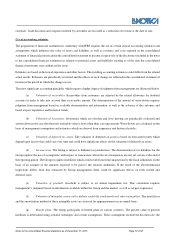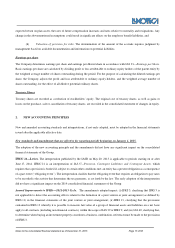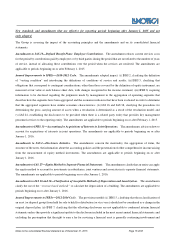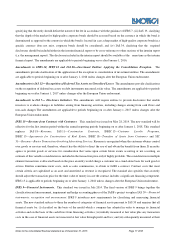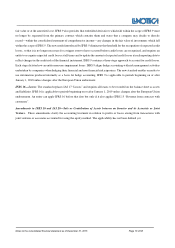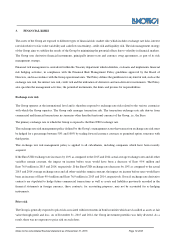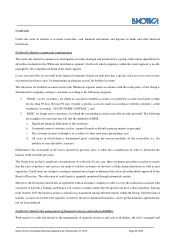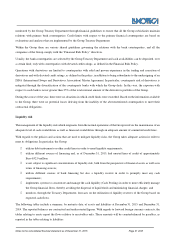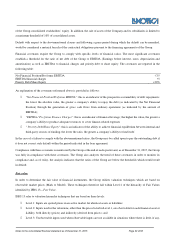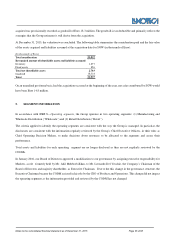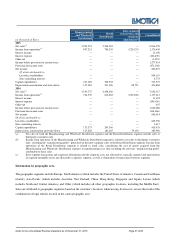LensCrafters 2015 Annual Report Download - page 111
Download and view the complete annual report
Please find page 111 of the 2015 LensCrafters annual report below. You can navigate through the pages in the report by either clicking on the pages listed below, or by using the keyword search tool below to find specific information within the annual report.
Notes to the consolidated financial statement as of December 31, 2015 Page 17 di 68
specifying that the entity should define the nature of the fee in accordance with the guidance of IFRS 7, (iii) IAS 19, clarifying
that the depth of the market for high-quality corporate bonds should be assessed based on the currency in which the bond is
denominated as opposed to the country in which the bond is located (in case a deep market of high-quality corporate bonds in a
specific currency does not exist, corporate bonds should be considered), and (iv) IAS 34, clarifying that the required
disclosures should be included either in the interim financial report or by cross-reference to other sections of the interim report
(i.e. the management report). The disclosure included in the interim report should be available at the same time as the interim
financial report. The amendments are applicable to periods beginning on or after January 1, 2016.
Amendments to IFRS 10, IFRS 12 and IAS 28—Investment Entities: Applying the Consolidation Exception. The
amendments provide clarification of the application of the exception to consolidation of investment entities. The amendments
are applicable to periods beginning on or after January 1, 2016 unless changes after the European Union endorsment.
Amendments to IAS 12— Recognition of Deferred Tax Assets on Unrealized Losses. The amendments provide clarifications
on the recognition of deferred tax assets on debt instruments measured at fair value. The amendments are applicable to periods
beginning on or after January 1, 2017 unless changes after the European Union endorsment.
Amendments to IAS 7— Disclosure Initiatives. The amendments will require entities to provide disclosures that enable
investors to evaluate changes in liabilities arising from financing activities, including changes arising from cash flows and
non-cash changes The amendments are applicable to periods beginning on or after January 1, 2017 unless changes after the
European Union endorsment.
IFRS 15—Revenue from Contracts with Customers. This standard was issued on May 28, 2014. The new standard will be
effective for the first interim period within the annual reporting periods beginning on or after January 1, 2018. This standard
replaces IAS 18—Revenues, IAS 11—Construction Contracts, IFRIC 13—Customer Loyalty Programs,
IFRIC 15—Agreements for Constructions of Real Estate, IFRIC 18—Transfers of Assets from Customers and SIC
31—Revenue—Barter Transactions Involving Advertising Services. Revenue is recognized when the customer obtains control
over goods or services and, therefore, when it has the ability to direct the use of and obtain the benefit from them. If an entity
agrees to provide goods or services for consideration that varies upon certain future events occurring or not occurring, an
estimate of this variable consideration is included in the transaction price only if highly probable. The consideration in multiple
element transactions is allocated based on the price an entity would charge a customer on a stand-alone basis for each good or
service. Entities sometimes incur costs, such as sales commissions, to obtain or fulfill a contract. Contract costs that meet
certain criteria are capitalized as an asset and amortized as revenue is recognized. The standard also specifies that an entity
should adjust the transaction price for the time value of money in case the contract includes a significant financing component.
IFRS 15 is applicable to periods beginning on or after January 1, 2018 unless changes after the European Union endorsment.
IFRS 9—Financial Instruments. This standard was issued in July 2014. The final version of IFRS 9 brings together the
classification and measurement, impairment and hedge accounting phases of the IASB’s project to replace IAS 39—Financial
instruments: recognition and measurement. IFRS 9 introduces new requirements for classifying and measuring financial
assets. The new standard reduces to three the number of categories of financial assets pursuant to IAS 39 and requires that all
financial assets be: (i) classified on the basis of the model which a company has adopted in order to manage its financial
activities and on the basis of the cash flows from financing activities; (ii) initially measured at fair value plus any transaction
costs in the case of financial assets not measured at fair value through profit and loss; and (iii) subsequently measured at their


